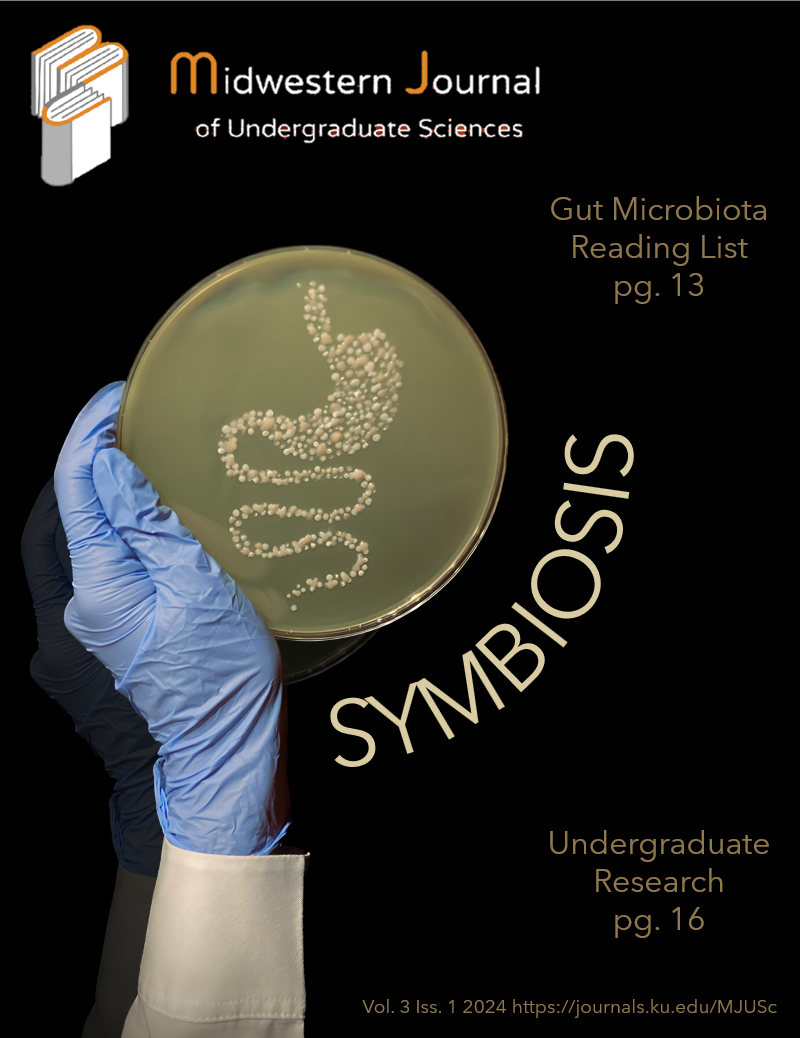Harnessing Natures Palette
Bioengineering Yeast for Sustainable Textile Dyeing with Betalains
DOI:
https://doi.org/10.17161/mjusc.v3i1.22347Keywords:
betalain, betaxanthin, betacyanin, waste water, textile industry, UBQ:RUBY, MtPT4Abstract
The fast-paced digital era has sparked an alarming surge of micro-trends in the fashion industry. Many companies prioritize mass production of textiles to fuel a culture of disposable fashion. This mass production of dyed textiles relies heavily on the use of synthetic azo dyes and, in some processes, the use of heavy metals such as lead, mercury, and chromium VI. Consequently, our planet’s landfills are inundated with an overwhelming volume of clothes that can leach toxic or carcinogenic chemicals into the environment. In response, scientists are researching sustainable alternatives that can harness living organisms to produce biosynthetic dyes that have less environmental impact. To contribute to this research effort, I aimed to develop a bioengineered strain of yeast that expresses red pigments called Betalains, a gene derived from beetroots. To achieve this, I will use a plasmid called UBQ: RUBY which is a gene cassette that contains requisite enzymes and promotors to express Betalains in a yeasts model. The expressed biosynthetic dye will then be purified and its fabric-standing properties will be characterized. Ultimately, this bioengineered yeast strain can be used to mass produce the red biosynthetic dye, Betalains, which could replace environmentally harmful synthetic dyes. This research project serves as a proof-of-concept study that could lay the foundation for the broader adoption of more sustainable and ethically conscious textile dyeing processes for decades to come.
References
Kant, R. Textile dyeing industry an environmental hazard. 2012, (2011).
Toprak, T. & Anis, P. Textile Industry’s Environmental Effects and Approaching Cleaner Production and Sustainability: an Overview. J. Text. Eng. Fash. Technol. 2, (2017).
World’s first synthetic dye | Science and Industry Museum. Science and Industry Museum blog https://blog.scienceandindustrymuseum.org.uk/worlds-first-synthetic-dye/ (2017).
Belhadj Slimen, I., Najar, T. & Abderrabba, M. Chemical and Antioxidant Properties of Betalains. J. Agric. Food Chem. 65, 675–689 (2017).
Azeredo, H. M. C. Betalains: properties, sources, applications, and stability – a review. Int. J. Food Sci. Technol. 44, 2365–2376 (2009).
Hatlestad, G. J. et al. The beet R locus encodes a new cytochrome P450 required for red betalain production. Nat. Genet. 44, 816–820 (2012).
Sunnadeniya, R. et al. Tyrosine Hydroxylation in Betalain Pigment Biosynthesis Is Performed by Cytochrome P450 Enzymes in Beets (Beta vulgaris). PloS One 11, e0149417 (2016).
Lombardelli, C., Benucci, I., Mazzocchi, C. & Esti, M. A Novel Process for the Recovery of Betalains from Unsold Red Beets by Low-Temperature Enzyme-Assisted Extraction. Foods 10, 236 (2021).
Lazăr (Mistrianu), S. et al. Optimization of Betalain Pigments Extraction Using Beetroot by-Products as a Valuable Source. Inventions 6, 50 (2021).
Gonçalves, L. C. P. et al. A comparative study of the purification of betanin. Food Chem. 131, 231–238 (2012).
Charkoudian, L. K., Fitzgerald, J. T., Khosla, C. & Champlin, A. In Living Color: Bacterial Pigments as an Untapped Resource in the Classroom and Beyond. PLOS Biol. 8, e1000510 (2010).
Zhang, Q. et al. Commensal bacteria direct selective cargo sorting to promote symbiosis. Nat. Immunol. 16, 918–926 (2015).
Addgene: MtPT4. https://www.addgene.org/117096/.
Narsing Rao, M. P., Xiao, M. & Li, W.-J. Fungal and Bacterial Pigments: Secondary Metabolites with Wide Applications. Front. Microbiol. 8, 1113 (2017).
Venil, C. K., Velmurugan, P., Dufossé, L. & Renuka Devi, P. Fungal Pigments: Potential Coloring Compounds for Wide Ranging Applications in Textile Dyeing. J. Fungi (2020) doi:10.3390/jof6020068.
the MAIWA BLOG: Natural Dyes. https://maiwahandprints.blogspot.com/2013/01/natural-dyes-mordants-part-1.html.
Aren’t natural dyes safer than synthetic dyes? http://www.pburch.net/dyeing/FAQ/naturalsafety.shtml.
Farm, J. Are Natural Dyes Safe? Clearing up the Confusion About Chemical Dyes and Metal Mordants. Joybilee® Farm | DIY | Herbs | Gardening | https://joybileefarm.com/are-natural-dyes-safe-clearing-up-the-confusion-about-chemical-dyes-and-metal-mordants/ (2012).
How to Mordant with Symplocos. Botanical Colors https://botanicalcolors.com/botanical-colors-how-tos/how-to-mordant-with-symplocos/.
Babaei, M. et al. Combinatorial engineering of betalain biosynthesis pathway in yeast Saccharomyces cerevisiae. Biotechnol. Biofuels Bioprod. 16, 128 (2023).
Addgene: UBQ:RUBY. https://www.addgene.org/160909/.
Sadowska-Bartosz, I. & Bartosz, G. Biological Properties and Applications of Betalains. Molecules 26, 2520 (2021).
Symplocos Plant Mordant - Botanical Colors. https://botanicalcolors.com/shop/mordants/symplocos/.
Downloads
Published
Issue
Section
License
Copyright (c) 2024 bridget ruhme, Dr. Jack Treml, Dr. Randall Logan

This work is licensed under a Creative Commons Attribution-NonCommercial 4.0 International License.
© The Author(s)
This work is licensed under a Creative Commons Attribution-NonCommercial 4.0 International license.

